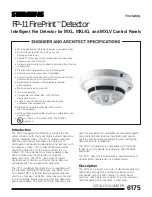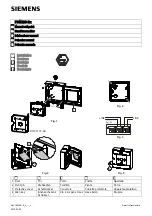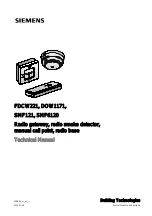
© 2013 UTC Fire & Security. All rights reserved.
1 / 2
P/N 501-405203-5-30 • REV 03 • ISS 23FEB13
ZP2 Series Quick Operation Guide
If you hear the buzzer
Determine the cause of the buzzer
WARNING:
Depending on your fire alarm system
configuration, the buzzer may be your first indication of a fire
alarm.
If the buzzer is sounding and the Alarm LED is flashing or
steady, then it’s a fire alarm.
If the buzzer is sounding and the Fault LED is steady, then it’s
a fault.
For a fire alarm
1. Determine the location of the fire
Check the location of the fire. The LCD message area displays
information from the first and last zones to report an alarm.
Alarm location details are indicated as follows.
LCD
Description
Example
d
Number of devices in alarm
d:010
P
Control panel ID
P01
Z
Zone
Z0001
D
Loop and device
D3.010
In this example, P01:Z0001:D3.010, an alarm has been
activated by device 10 on loop 3 in zone 1 on control panel 1
(ten devices are in alarm in the corresponding zone).
2. Determine the source of the fire alarm
The following LCD icons indicate the source of the fire alarm.
Detector alarm. If the Alarm LED is flashing and the
detector icon is displayed on the LCD, then the system
has detected a detector alarm.
Manual call point alarm. If the Alarm LED is steady, and
the manual call point icon is displayed on the LCD, then
the system has detected a manual call point alarm.
3. Verify the fire alarm
If necessary, investigate the location of the fire alarm to
confirm that the alarm is genuine.
Depending on the configuration of your fire alarm system, you
may have up to ten minutes to investigate the alarm before
sounders and other alarm notification devices are activated.
ALARM
FAULT




















